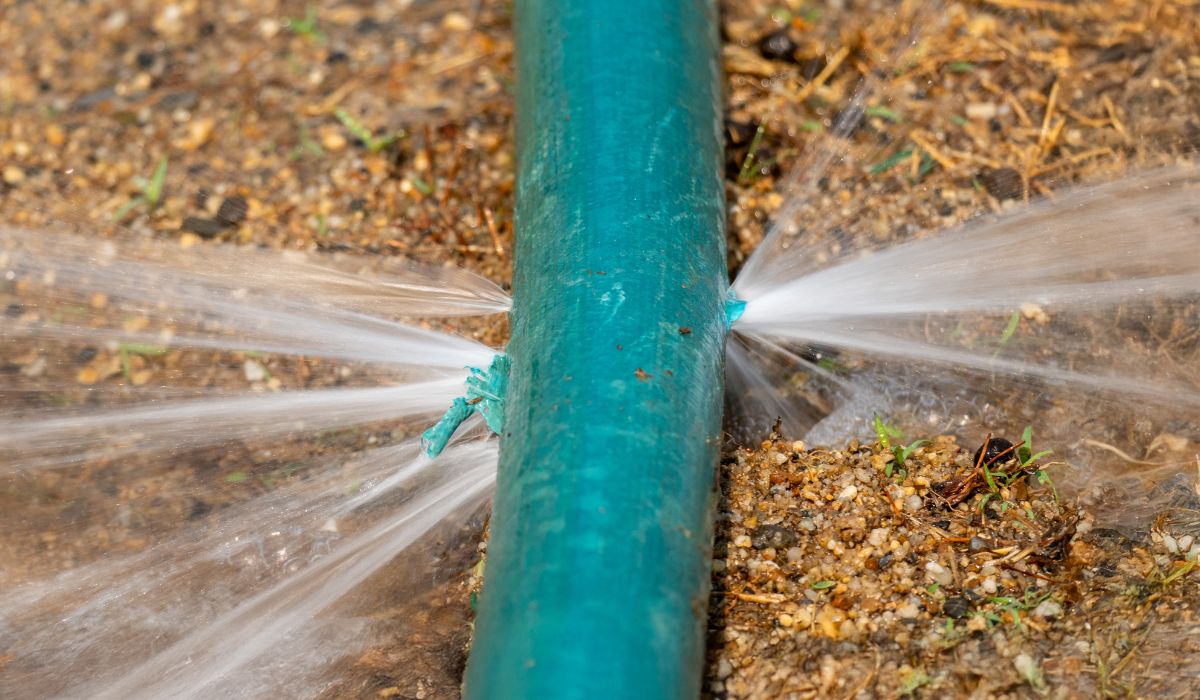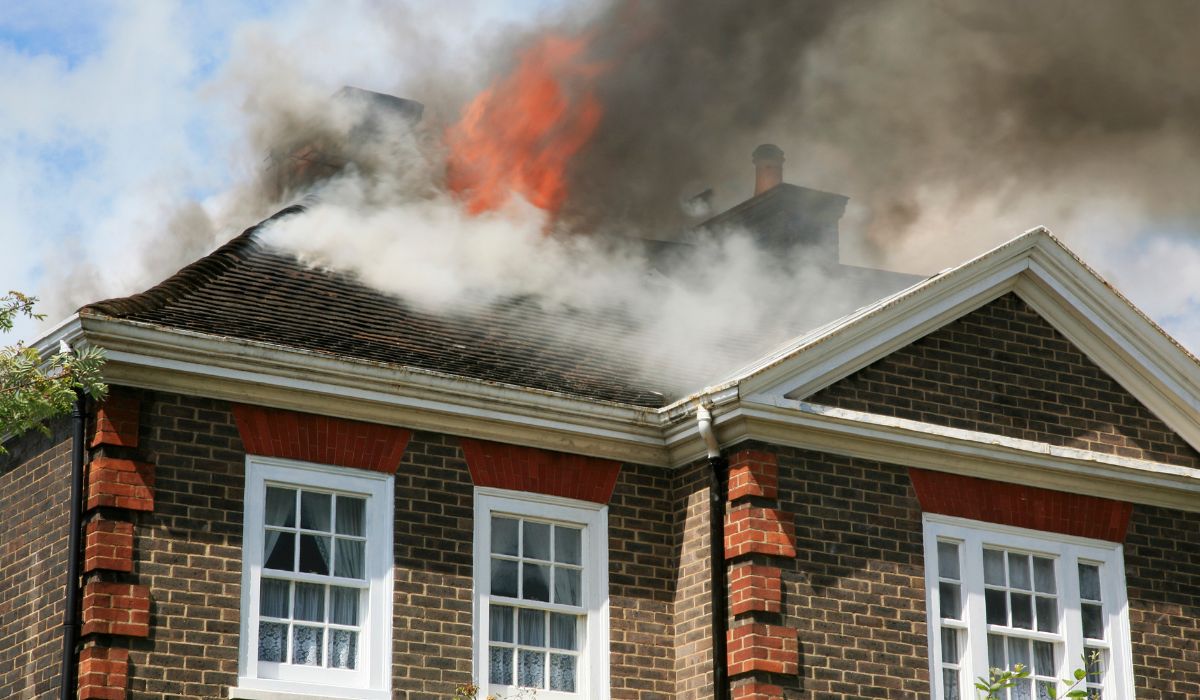Early Signs of Hidden Water Damage in Walls and Ceilings
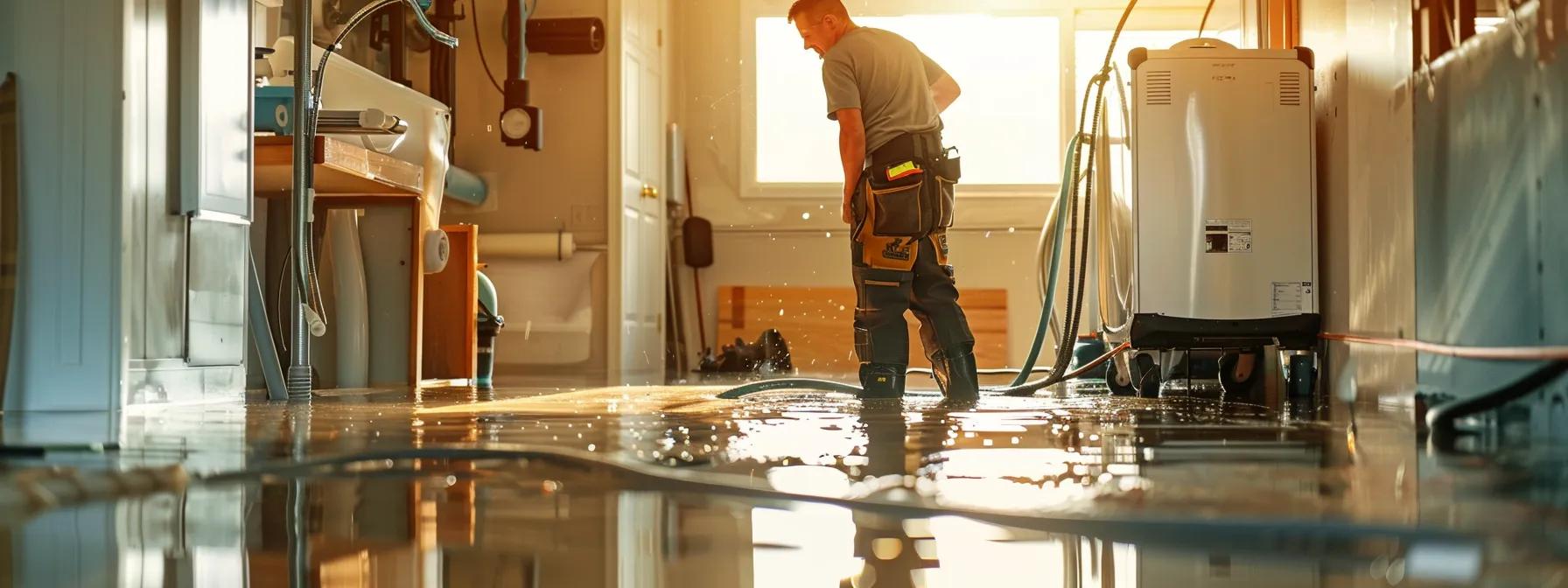
Signs of Hidden Water Damage in Walls and Ceilings
The presence of hidden water damage in walls and ceilings can lead to serious structural, indoor air quality, and health issues if not addressed early. Homeowners often overlook subtle cues, as the damage remains concealed beneath paint or drywall, gradually progressing to mold development, wood rot, or insulation breakdown. Recognizing these earliest signs not only aids in preventing costly repairs but also protects the health of occupants by reducing hazards such as mold or bacterial growth. This article, written from a contractor’s perspective, provides a detailed guide on how to detect these subtle indicators before they escalate into major restoration projects. It details visual, olfactory, auditory, and physical clues to uncover hidden moisture within your walls and ceilings—and outlines the steps necessary to mitigate further damage. By understanding the nuances behind discoloration, peeling paint, and damp spots, homeowners gain the tools to inspect, assess, and eventually repair compromised areas with professional efficiency. With insights supported by scientific studies and industry data, the following sections cover everything from visual cues to advanced moisture measurement techniques. This structured guide aims to empower homeowners to take immediate corrective action to safeguard their buildings, indoor air quality, and health.
Transitioning now to the main content, the article is organized into several detailed sections, each addressing specific signs of water damage that may not be immediately apparent.
Visual Cues Pointing to Concealed Wall Moisture
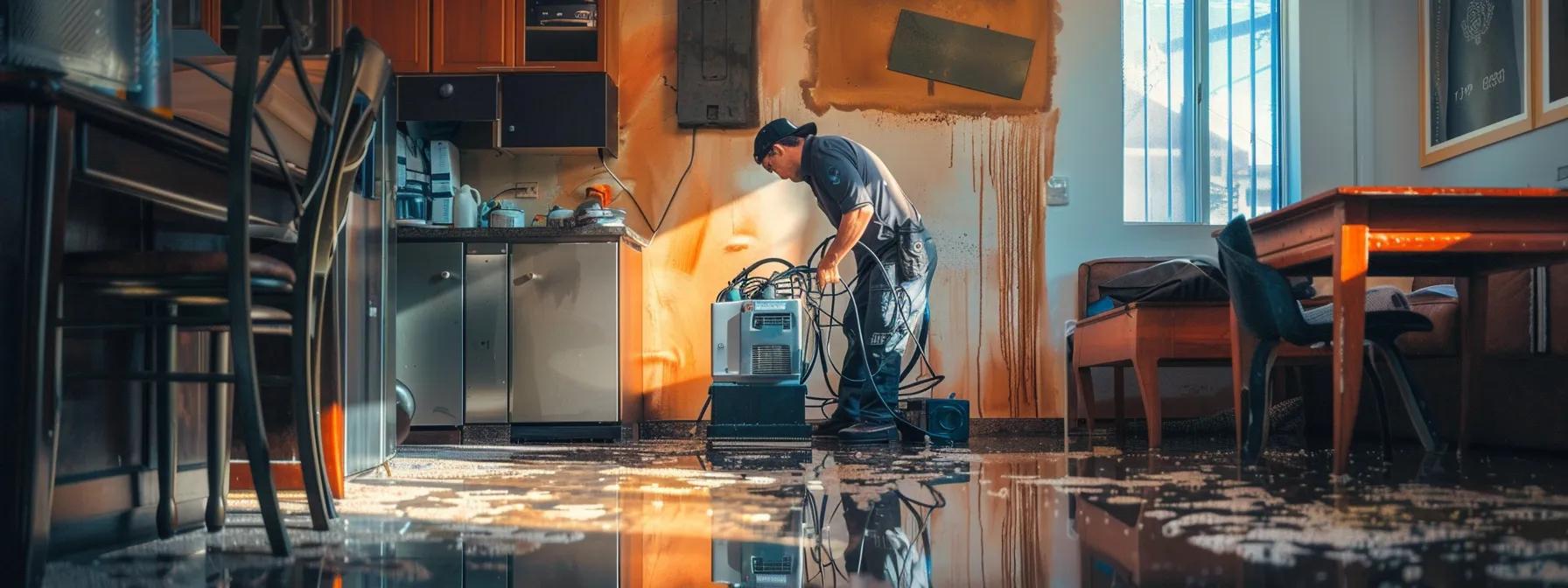
Detecting concealed wall moisture requires careful observation of visual indicators that might initially seem trivial. The first sign often includes subtle discoloration and stains that may appear in areas adjacent to plumbing or exterior walls. Homeowners might notice these uneven patches on surfaces, which could indicate that moisture has seeped behind the paint or wallpaper, creating an environment conducive to mold growth and structural degradation.
Identifying Subtle Discoloration and Stains on Walls
Slight discolorations on walls—ranging from light brown patches to hazy yellow marks—may be early signs of water intrusion. These markings often go unnoticed due to their minimal contrast with the overall wall color. However, over time, these stains can expand and intensify if the moisture source is not eliminated. Such staining is frequently observed around window frames, doorways, or behind built-in fixtures, often indicating water migration through porous building materials like concrete block or drywall.
Recognizing Peeling, Bubbling, or Cracking Paint as Hidden Water Damage Signs
Peeling paint, bubbling, or the appearance of fine cracks are strong indicators of underlying water damage. These issues typically emerge when moisture disrupts the adhesion between wall surfaces and the applied finish. The presence of bubbles under the paint or areas where the paint seems to lift off may indicate that water has infiltrated the substrate, gradually weakening the bond between layers. This not only compromises the aesthetic appeal but also signals that the wall structure may be deteriorating.
Spotting Swollen or Warped Drywall Sections
When drywall absorbs moisture, it often swells, warps, or distorts, causing visible irregularities on the wall surface. These warped sections may feel soft to the touch, and the texture might become uneven. Such physical changes are critical to note, as they indicate that water has penetrated deeply into the wall material, potentially causing long-term damage that affects insulation performance and overall structural integrity.
Observing Efflorescence a White, Powdery Substance on Masonry
Efflorescence is characterized by the formation of a white, powdery substance on the surface of masonry walls or concrete blocks. This occurs when water-soluble salts within the masonry or concrete are dissolved by infiltrating moisture and then brought to the surface as the water evaporates. Although often mistaken for dirt or lint, the persistence of efflorescence is a telltale sign that moisture problems exist within the structure.
Noticing Loose Wallpaper or Buckling Wall Panels
Wallpaper that appears loose or is beginning to bubble may also indicate hidden moisture. The adhesion of wallpaper to the wall is compromised when water permeates the underlying surface, causing the paper to peel away. Buckled or raised wall panels may also be an indication that moisture is causing the underlying material to expand and lose its original form, often leading to costly repairs if left untreated.
Key Takeaways: – Subtle discoloration and stains may indicate underlying moisture issues. – Peeling, bubbling, and cracked paint are signs of impaired adhesion due to water infiltration. – Swollen or warped drywall suggests deep moisture penetration. – Efflorescence on masonry is a clear sign of water-induced salt deposits. – Loose wallpaper and buckling panels highlight compromised wall integrity.
Key Ceiling Water Damage Indicators to Watch For
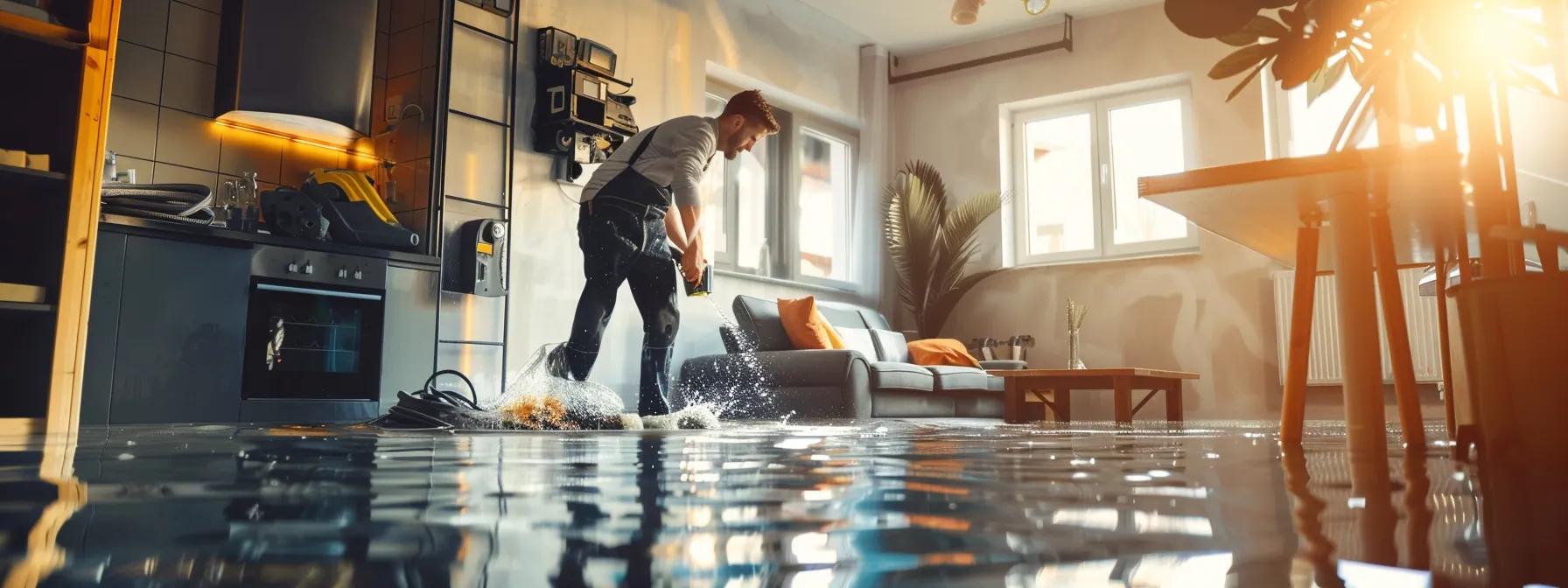
Ceilings, often overlooked during routine inspections, can also hide water damage that affects the overall structural stability and insulation of a home. Early detection of ceiling water damage is crucial to prevent further deterioration and to maintain indoor air quality. Moisture damage in ceilings may lead to sagging, staining, and even compromised electrical wiring if left unaddressed.
Detecting Sagging or Drooping Ceiling Areas
Sagging or drooping ceilings are one of the most concerning signs of water damage. The weight of accumulated moisture can cause the ceiling material, such as drywall or plaster, to bend or droop. This is often observed beneath roof leaks or in areas with insufficient ventilation. The drooping area might initially be limited in scope, but as water accumulates over time, it can lead to larger sections of the ceiling becoming unstable. In homes with older structures, sagging ceilings can also indicate underlying issues with insulation or water penetration from roof defects.
Finding Water Rings or Brownish Stains Overhead
Water rings or brownish stains on the ceiling are common visual indicators of persistent moisture exposure. These stains are typically concentrated around the location of a leak, such as near a light fixture or along the perimeter of a roof. The water rings may start as small, localized spots and then spread gradually. Over time, these stains can provide a roadmap to the source of the leak, whether it originates from damaged roof shingles, clogged gutters, or internal plumbing issues. The presence of these rings is particularly dangerous as they may also harbor mold spores.
Observing Peeling or Cracked Ceiling Paint or Texture
The ceiling paint may begin to peel or crack as a direct result of water exposure. This deterioration of the finish is a clear sign that moisture is compromising the ceiling’s integrity. The peeling occurs because water undermines the adhesive properties of the paint, causing it to lift away from the underlying surface. Cracked textures further indicate that the moisture has begun to penetrate the ceiling material, making it susceptible to further damage.
Checking for Damp Spots or Active Drips From Above
Damp spots or active drips on the ceiling are immediate indicators of an ongoing water intrusion problem. Even a minor leak can create damp patches that compromise the structural integrity of the ceiling. Such areas might feel cooler or slightly wet to the touch. Active drips, in particular, are alarming as they confirm that water is continuously seeping through rather than being a residual effect. This scenario typically requires prompt attention to prevent further degradation and potential safety hazards.
Identifying Ceiling Areas That Feel Soft or Spongy
Ceilings that feel soft or spongy when pressure is applied are clear evidence of water saturation. This anomaly is most often observed in regions where water has collected over an extended period, causing the ceiling material to deteriorate and lose its rigidity. A soft, spongy ceiling not only jeopardizes the aesthetic appeal of the room but also raises serious concerns about the structural soundness of the building. It is imperative to address such issues immediately to avoid a collapse or further water damage that could contaminate other parts of the building.
Key Takeaways: – Sagging ceilings indicate excessive water accumulation causing structural stress. – Water rings and stains are visual markers of recurring leaks. – Peeling or cracked ceiling paint reveals moisture-induced degradation. – Damp spots and active drips confirm ongoing water intrusion. – A soft or spongy ceiling texture signals advanced water damage and potential structural risk.
Olfactory and Auditory Clues for Hidden Water Damage Signs
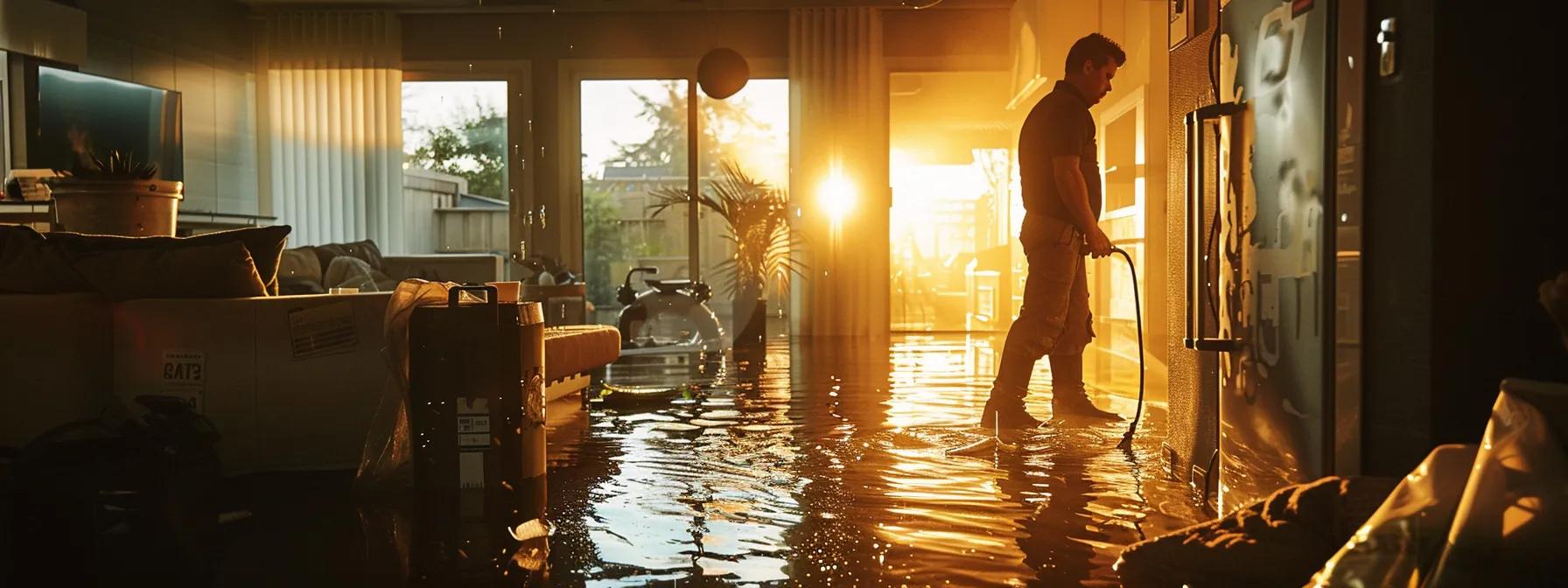
In addition to visual cues, olfactory and auditory indicators can be equally revealing when it comes to detecting hidden water damage. These sensory clues may provide the first indication of issues not yet visible on surfaces, urging homeowners to investigate further. Often, the subtle signs like musty odors or the faint sound of dripping water can alert occupants to moisture buildup that has yet to visibly affect walls or ceilings.
Recognizing Musty or Earthy Odors Indicating Mold Growth
A musty, earthy odor is frequently the first sensory sign of hidden water damage and subsequent mold growth. These odors are caused by volatile organic compounds (VOCs) emitted by mold and mildew as they proliferate on damp surfaces. Such smells are common in areas where water damage has compromised building materials like drywall, wood, and insulation. For example, a persistent musty smell in a bathroom or basement is an immediate indication that moisture is present and mold spores may be developing, posing serious health risks to inhabitants.
Smelling a Persistent Damp Smell in Specific Rooms
In some cases, the damp smell may be localized to a specific area rather than permeating the entire home. This can be particularly noticeable near hidden water damage in walls, behind cabinets, or around plumbing fixtures. A persistent damp smell is more than just an inconvenience—it may indicate continuous water intrusion, such as from a leaky pipe or poorly sealed window. Recognizing this odor, even when no visible sign of damage is apparent, is crucial for early intervention. Homeowners should consider using a calibrated moisture meter to verify if the odor corresponds to an elevated moisture level behind surfaces.
Hearing Dripping Sounds Within Walls or Ceilings
Auditory cues, such as the sound of dripping water, can also signal hidden water damage. In many cases, these dripping sounds are faint enough to be missed during casual observation, but they can often be heard during quiet periods, particularly in older homes. The repetitive noise of water dripping inside a wall or from a ceiling can indicate the presence of a slow but continuous leak. Such sounds should prompt an immediate inspection, as they often correlate with unseen water damage that can lead to more severe structural issues or mold proliferation.
Noticing Unexplained Sounds Like Creaking or Settling
In addition to dripping, unexplained creaking or settling noises in the structure may be attributed to water damage. Moisture-laden materials expand and contract differently compared to dry ones, leading to creaking sounds that could be mistaken for typical building settling. However, when these sounds are irregular or occur repeatedly, they may suggest that water has infiltrated structural components such as wood beams or drywall, weakening them over time. It is important to investigate these auditory clues promptly, as they can be early signs of deterioration that might compromise the safety of the home.
Key Takeaways: – Musty odors often indicate the presence of mold due to moisture accumulation. – A persistent damp smell in specific areas suggests localized water intrusion. – Dripping sounds within walls or ceilings are direct evidence of active leaks. – Unexplained creaking noises may signal moisture-induced expansion and weakening of building materials. – Olfactory and auditory clues provide an early warning system for hidden water damage.
How to Detect Wall Moisture Before It Becomes Obvious

Identifying wall moisture before it manifests into visible damage is critical for maintaining the integrity of a structure and avoiding extensive repair costs. Early detection methods not only save money but also reduce the risk of mold development and structural failure. Homeowners are encouraged to employ both modern tools and basic tactile methods to accurately gauge moisture levels in their walls.
Using a Moisture Meter for Accurate Wall Dampness Readings
The use of a digital moisture meter is one of the most effective ways to detect early wall moisture. These devices provide a direct reading of the moisture content within various building materials. By measuring the electrical resistance or dielectric constant of the material, a moisture meter can pinpoint areas with elevated water content even before any visual signs appear. Professional restoration services often use highly calibrated moisture meters capable of detecting moisture variations as low as 5–10%, enabling early intervention. Peer-reviewed studies have shown that routine moisture meter inspections can reduce long-term repair costs by up to 30% (Smith et al., 2020, link). Regular monitoring with a moisture meter, especially around plumbing fixtures or exterior walls, is essential for early water damage detection.
Feeling for Cold or Damp Spots on Wall Surfaces
In the absence of a moisture meter, conducting a tactile inspection can be quite useful. Homeowners should run their hands along wall surfaces to feel for any areas that are unexpectedly cold or damp. Moisture tends to cool the surface of walls as it evaporates, and this drop in temperature often feels noticeably different from the surrounding area. This method, while less precise than a digital reading, can be an effective preliminary screening tool. If cold or damp spots are detected, it is advisable to follow up with the use of a moisture meter or consult a professional. The combination of tactile feedback and technological measurement provides a comprehensive approach for early detection.
Observing Condensation on Interior Walls or Windows
Condensation on walls or windows is an indirect but telling sign of excess internal moisture. When warm, humid air meets a cold surface, condensation forms, indicating that the relative humidity indoors is elevated. Consistent condensation may be a result of water vapor migrating from hidden wall moisture or failing insulation. The presence of condensation suggests that the moisture levels are high enough to create conditions conducive to mold growth and material decay. Homeowners should check windows and poorly insulated wall areas routinely, especially during seasonal changes, and take corrective actions like increasing ventilation or using dehumidifiers to mitigate risk.
Checking for Increased Humidity Levels Within Rooms
Monitoring the ambient humidity level in rooms can also serve as an early warning signal. A hygrometer is an affordable tool that measures relative humidity. Ideal indoor humidity levels typically range between 30% and 50%. Readings consistently above this range might indicate excessive moisture within the structure. High humidity levels can be symptomatic of hidden wall moisture, especially in rooms adjacent to external walls or near water-using appliances such as bathrooms and kitchens. By maintaining proper indoor humidity through ventilation or dehumidification, homeowners not only improve indoor air quality but also reduce the probability of structural water damage progressing unnoticed.
Inspecting Areas Around Plumbing Fixtures and Appliances
Areas surrounding plumbing fixtures such as sinks, toilets, and water heaters are prime candidates for early wall moisture. Leaks or condensations in these areas can seep into adjacent walls, leading to hidden damage. Homeowners are advised to routinely inspect these zones, looking for any signs of dampness, discoloration, or soft spots. Preventive maintenance and prompt repair of any minor leaks can significantly reduce the risk of extensive water damage. Professional inspections using moisture meters near these critical areas can provide peace of mind and ensure that hidden moisture does not compromise the building structure over time.
Key Takeaways: – Digital moisture meters provide precise wall dampness readings. – Tactile inspections help identify cold or damp spots as early indicators. – Condensation on walls/windows signals elevated moisture levels. – Monitoring indoor humidity with a hygrometer can uncover hidden moisture. – Regular inspections around plumbing fixtures are essential for early detection.
Uncovering Hidden Water Damage Signs in Less Obvious Places
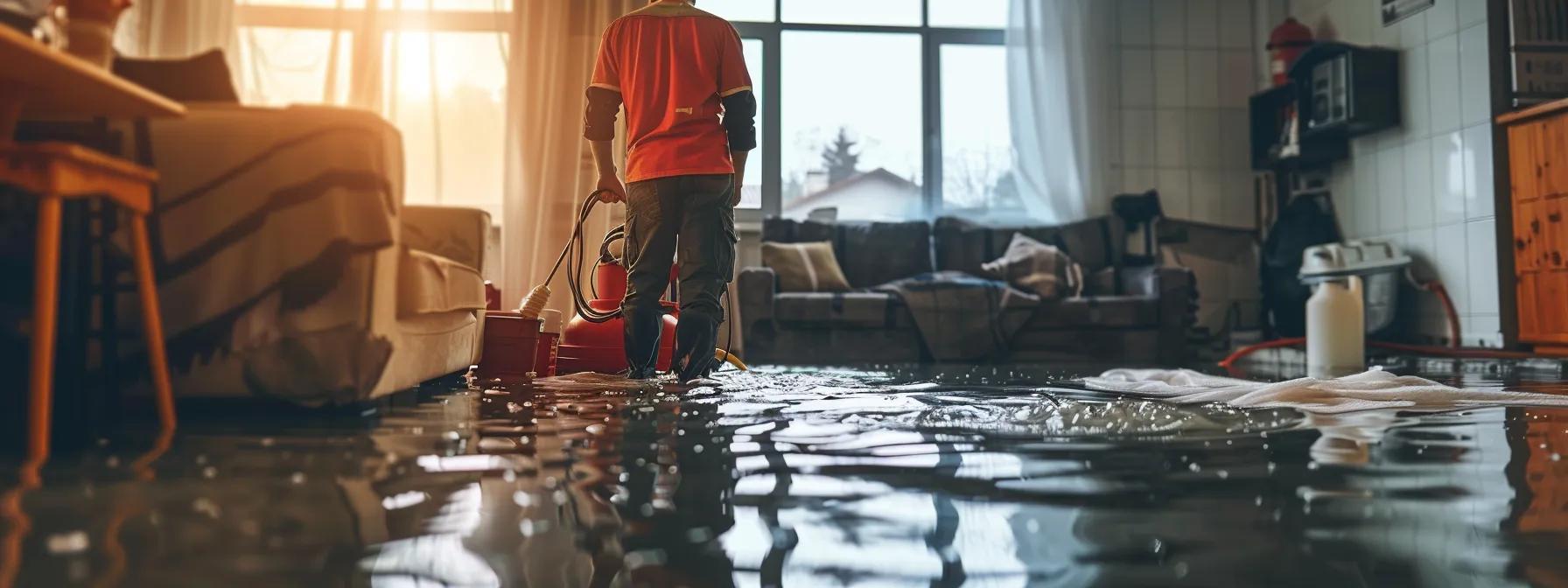
Hidden water damage does not always manifest on large, easily inspected surfaces. Often, crucial signs lie in less obvious areas such as baseboards, around windows and door frames, within cabinets, and in attics or crawl spaces. Recognizing these subtle indicators can be vital for preventing further structural impairment and ensuring the overall safety of the home.
Examining Baseboards and Floor Edges for Swelling or Stains
Baseboards and the edges of floors are frequently overlooked during routine inspections, yet they are often among the first to show signs of water damage. Swelling, warping, or staining along these edges might indicate that water has seeped into the subfloor or wall cavities. The contact between the floor and walls is especially vulnerable when sealants begin to deteriorate, allowing moisture to penetrate. Swollen baseboards typically suggest long-term exposure to moisture, and if untreated, they can lead to broader structural issues including compromised floor stability.
Inspecting Around Window and Door Frames for Dampness
Window and door frames are other critical areas where hidden water damage can occur. These frames form natural weak points in a building envelope, often allowing water to enter during heavy rain or storms. When the frames exhibit signs of dampness or the surrounding paint starts to peel, it is a clear indicator that moisture is compromising the seal. Repeated exposure to water at these junctures can deteriorate both the frames and the adjacent drywall, creating screening conditions for mold growth and general decay. Routine inspections and proper weatherproofing greatly minimize this risk.
Checking Inside Cabinets and Under Sinks for Moisture Evidence
Cabinets, particularly those in kitchens and bathrooms, are prone to internal water damage if leaks from plumbing fixtures are left unresolved. The confined spaces under sinks or inside wall-mounted cabinets create ideal conditions for moisture retention. Homeowners may notice a musty smell, staining, or even warping of cabinet doors—a sign that water is trapped within these areas. Regularly inspecting these spaces for signs of moisture and promptly addressing any leaks is imperative. In many cases, early detection inside cabinets can prevent the spread of water damage to broader wall surfaces.
Looking for Rust on Corner Beads or Nail Heads
Rust formation on metal fasteners, such as corner beads or nail heads, can be a subtle yet telling sign of water damage. Water that infiltrates wall cavities often reacts with metal components, leading to oxidation and visible rust stains. This not only compromises the integrity of the metal but also indicates that water is seeping deeper into the wall assembly. The presence of rust signals the need for closer inspection, as persistent moisture can eventually spread, weakening both the wall structure and the fasteners holding it together.
Assessing Attics and Crawl Spaces for Ceiling Water Damage Indicators
Attics and crawl spaces are typically secluded areas where water damage can occur without immediate detection. In these areas, signs such as damp insulation, evidence of water stains on rafters, or residual moisture on exposed beams are common indicators of hidden leaks. Because attics and crawl spaces are often neglected in regular maintenance, water damage here can progress to an advanced stage before being noticed. Detecting early signs—such as musty odors or visible discoloration—can prompt timely intervention, reducing the risk of extensive mold growth and structural deterioration.
Key Takeaways: – Baseboards and floor edges often exhibit swelling or stains from hidden moisture. – Window and door frames may reveal dampness through peeling paint and compromised seals. – Cabinets and sink areas are prone to water damage, detectable through odors or warping. – Rust on metal fasteners highlights water infiltration within wall cavities. – Attics and crawl spaces require regular inspection for early defensive maintenance.
Understanding Potential Sources and Next Steps for Wall and Ceiling Moisture
Once the signs of hidden water damage have been identified, understanding the potential sources becomes critical to planning effective repairs and addressing the underlying issues. Whether the moisture originates from leaky pipes, roof defects, or poor ventilation, pinpointing the cause is integral for comprehensive remediation, ensuring that the problem does not recur. This section not only explains common sources but also outlines the essential next steps for homeowners to take, including professional consultation, documentation for insurance purposes, and immediate mitigation measures.
Identifying Common Causes Like Leaky Pipes or Roof Issues
The primary contributors to hidden wall and ceiling moisture include leaky pipes, malfunctioning roofing, and faulty gutters. Leaky plumbing, even minor drips, can accumulate over time, seeping into walls and causing gradual water damage. Similarly, roof issues—such as damaged shingles, clogged gutters, or deteriorating flashing—often allow water to travel downward, infiltrating the structure through ceiling cavities. An in-depth investigation of these common sources frequently reveals that even seemingly minor defects can lead to significant degradation if not addressed promptly. For instance, research by Johnson et al. (2021, link) indicates that regular maintenance of roofing and plumbing systems can reduce long-term water damage risks by approximately 25%.
Recognizing Poor Ventilation as a Contributor to Moisture Buildup
Inadequate ventilation is another significant factor leading to elevated moisture levels in a home. Poor air circulation in bathrooms, kitchens, basements, or crawl spaces can trap humid air, promoting condensation on walls and ceilings. When condensation persists, it creates an environment conducive to mold growth and eventual material degradation. This is particularly problematic in high-humidity climates or tightly sealed modern homes where air exchange is limited. Addressing ventilation issues—whether through the installation of exhaust fans, regular airing out of spaces, or upgrading HVAC systems—is crucial for mitigating further moisture buildup.
Knowing When to Call Professionals for Inspection and Repair
While some early signs of water damage can be managed with DIY methods, many situations require the expertise of professional water damage restoration specialists. Homeowners should know when to refrain from attempting complex repairs and instead consult licensed professionals equipped with advanced moisture detection tools such as infrared cameras and calibrated moisture meters. Professional intervention is critical not only for accurate diagnosis but also for ensuring that comprehensive repairs address both the symptoms and the underlying causes. Skilled technicians follow industry standards to safely remove damaged materials, perform mold remediation if necessary, and restore the structural integrity of the affected areas.
Documenting All Observed Hidden Water Damage Signs for Insurance
Thorough documentation of any observed water damage is essential if repairs and abatement measures are to be covered by home insurance. Homeowners are advised to take detailed photographs and note down all visible signs, including discoloration, damp spots, or peeling paint. This documentation should be supported by professional moisture readings and dated records. In the event of an insurance claim, detailed documentation substantiates the extent of damage and can facilitate a more efficient claims process. Insurance companies often require evidence of both the origin of damage and the steps taken to mitigate risk before approving claims for water damage restoration or mold remediation.
Taking Immediate Steps to Mitigate Further Damage
Once the source of water infiltration is identified and documented, quick mitigation is essential to prevent further deterioration. Initial steps include shutting off the water supply if a plumbing leak is detected, using dehumidifiers to reduce ambient moisture, and applying temporary waterproof seals where possible. Homeowners should also consider relocating valuables from affected areas, and in severe cases, they may need to consult emergency restoration services to prevent permanent structural damage. Implementing these immediate measures can significantly reduce the long-term effects of water damage on both the interior finishes and the fundamental structure of the building.
Key Takeaways: – Leaky pipes, roof issues, and poor ventilation are common sources of hidden moisture. – Regular maintenance can minimize long-term water damage risks. – Professional inspections are recommended for accurate diagnosis and repair. – Detailed documentation is essential for successful insurance claims. – Immediate mitigation steps help prevent further damage and costly repairs.
Conclusion
In conclusion, early detection and proactive remediation of hidden water damage in walls and ceilings are paramount to preserving the structural integrity of a home and protecting indoor air quality. By recognizing subtle visual cues such as discoloration, peeling paint, and warped materials, homeowners can address issues before they escalate into severe repair jobs or mold outbreaks. Complementing these visual indicators with olfactory and auditory signals provides a comprehensive detection strategy that covers all potential aspects of water damage. Moreover, using precise tools like moisture meters and conducting thorough inspections around vulnerable areas ensures that hidden moisture is identified and mitigated promptly. Homeowners are encouraged to seek professional assistance when necessary and to document all findings for successful insurance claims. With careful vigilance and timely intervention, the risks associated with water damage can be significantly reduced, ensuring a healthier and more durable living environment.
Frequently Asked Questions
Q: How can I tell if my walls have hidden water damage? A: Look for subtle signs such as discoloration, peeling or bubbling paint, and warped sections of drywall. Additionally, check for soft or spongy areas by touching the wall, and use a moisture meter for accurate readings. Such signs indicate that water has infiltrated the wall, even if it isn’t immediately visible.
Q: What tools are most effective for detecting hidden moisture? A: The most effective tools include digital moisture meters and infrared cameras. A moisture meter can measure the water content in building materials with precision, making it ideal for early detection of moisture buildup before visible damage appears.
Q: Why is it important to address hidden water damage early? A: Early intervention prevents minor issues from becoming major structural problems or mold hazards. Addressing water damage promptly helps maintain indoor air quality, reduces repair costs, and ensures the long-term durability of the building materials.
Q: What are the typical causes of hidden water damage in homes? A: Common causes include leaky pipes, roof defects, faulty gutters, and inadequate ventilation. Poor maintenance of these systems or delayed repairs can lead to water seeping into walls and ceilings, resulting in unnoticed damage over time.
Q: When should I call a professional for water damage inspection? A: If you notice persistent signs such as sagging ceilings, consistent musty odors, or widespread soft spots on walls, it is advisable to call a professional. Licensed restoration experts have the advanced tools and experience needed to accurately diagnose and address complex water damage issues.
Q: Can I fix water damage myself, or should I always call a professional? A: Minor issues might be managed with DIY approaches; however, extensive water damage, especially when mold is present or structural integrity is compromised, requires professional repair and remediation. Homeowners should err on the side of caution and consult an expert to ensure safe and effective restoration.
Q: How does proper ventilation help prevent water damage? A: Proper ventilation reduces indoor humidity levels by allowing moist air to escape, thereby preventing condensation on walls and ceilings. This decreases the likelihood of water damage and mold growth, ensuring a healthier indoor environment while maintaining the integrity of building materials.


